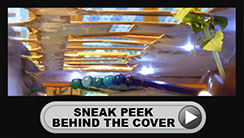
An enthusiastic, self-taught gardener, Tara Lissner is passionate about gardening and eager to share her zeal and knowledge with other gardening fans.
In 2012, she joined forces with Hester Macdonald, a British-trained landscape designer, to launch the Swiss Gardening School.
(Photo by Jean-Luc Pasquier)
Swiss Gardening School
www.swissgardeningschool.com
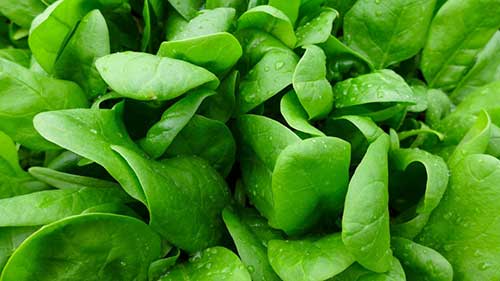
By Tara Lissner, Swiss Gardening School
I guess it is fair to say that the April drought is behind us – so much rain! Not that we didn’t want or need it of course just not all in the same week. To keep us on our toes the ice saints “saint glace” have also been busy working their magic with really chilly overnight temperatures frosting the new growth on everything from grape and fruit tree crops to eager gardeners with their tomatoes and basil already planted. Local advice from everyone, including the nice lady in the queue at Landi this week, dictates that nothing tender should be planted outside unprotected until after the days of the ice saints. These ice saints, Saint Mamertus, Saint Pancras and Saint Servatius, celebrate their feast days on 11, 12 and 13 May each year. This past week I saw early morning commuter cars covered in snow heading towards the autoroute – I remind you we are in May – keep an eye on the forecast and cover up your seedlings and tender summer bedding with horticultural fleece on nights when the forecast is for colder temperatures. The fleece should be removed in the day to harden off the seedlings and tender plants so they become accustomed to the temperatures.
With the arrival of May the plant market season is quickly upon us. From the small village “marché des plantes” to the bells and whistles of the wonderful “Jardins en Fête” this weekend in Coppet now is the time to get out and about and see what is on offer this year. Keep your eyes peeled for small posters advertising local plant markets, often short on notice they enliven village squares on a Saturday morning at the beginning of the season, Versoix, Trélex and Mies all are regular locations. The town greenhouses of Divonne will be open to the public on Saturday morning 20 May 09:00-12:00. Get a behind the scenes tour of the work that goes into making Divonne such a beautifully floral town. Click Divonne for more information.
I’ve been busy in my vegetable garden dodging the torrential rain. The beans and beanpoles are in, the potatoes are almost ready to be earthed up, the strawberries are flowering and will soon need their fruit lifted from the soil with straw, the raspberries are mulched and I’m waiting to buy my tomato plants at Coppet this weekend. I fear with all of this rain the slugs will be back in force very soon. The most effective way to deal with slugs is to use a nematode drench; a powder-like substance containing tiny nematodes which is mixed with water and applied to the soil, once in the slug the nematode releases a bacteria into the hosts which kills them. An effective product on the swiss market is made by Andermatt Biocontrol and is called bioslug. If you can’t wait to order by all means use whatever system works for you.
On to more pleasant subjects. I’ve been very happy to see my wildflower meadow is coming gently back to life, not least because our puppy decided to dig a trench through the middle of it. As it is on a slope I hadn’t noticed the damage until it was too late – a repair job of refilling the trench has now been completed and the area concerned reseeded, needless to say puppy is being more closely supervised in the garden.
Things are really taking off in the perennial borders. Peonies with their tight buds eager for the sun to reappear to help them open, the delphiniums are reaching for the sky ready to impress. While you still can still get into your borders give some support to your perennials, with days of rain and wind the new stems can be damaged and may well snap. Wire stands and supports are ideal, bamboo and string also works very well. It is best to do this staking before the plants get too big especially if you are using a cage, I’ve recently wrapped a delphinium in newspaper, secured with tape and carefully placed a tall wire cage over it, pushing the cage into the soil and then very gently removing the newspaper. The delphinium survived.
The good news about lots of rain is that the weeds come easily out of the ground. The bad news about lots of rain is that there are now lots of weeds! I’ll be busy this weekend pulling weeds and buying plants at Coppet. Enjoy the weekend and perhaps I’ll see you there.
What's On
Les Jardins du Château de Vullierens - until 18 June
The wonderful iris garden above Morges is now open for the season until 18 June from 09:00-18:00 every day.
Jardin des iris
Jardin de cinq sens, Yvoire
This delightful walled garden has now reopened for the season, always a delight, see their website for full details.
Jardin de cinq sens
Arboretum du vallon de l’Aubonne - until end October
If you have not yet discovered the Arboretum now is the perfect opportunity to do so. Their new website is packed with activities from three family brunches, Sunday guided visits and other special events and activities. Well worth a visit.
Arboretum
Courses
Our new look website is up an running with a number of garden visits and courses before the end of June. Don't forget to sign up and register via the website.
Garden visit – Jardin des Vullierens, Wednesday morning 17 May
Expore the iris garden above Morges with us.
Garden visit
Perfect Pots & Clever Containers - R. Jaggi, Tuesday morning 23 May
Learn how to get the best from your pots this summer and go home with one.
Perfect pots & clever containers
Author's bio

An enthusiastic, self-taught gardener, Tara Lissner is passionate about gardening and eager to share her zeal and knowledge with other gardening fans.
In 2012, she joined forces with Hester Macdonald, a British-trained landscape designer, to launch the Swiss Gardening School.
(Photo by Jean-Luc Pasquier)
Swiss Gardening School
www.swissgardeningschool.com
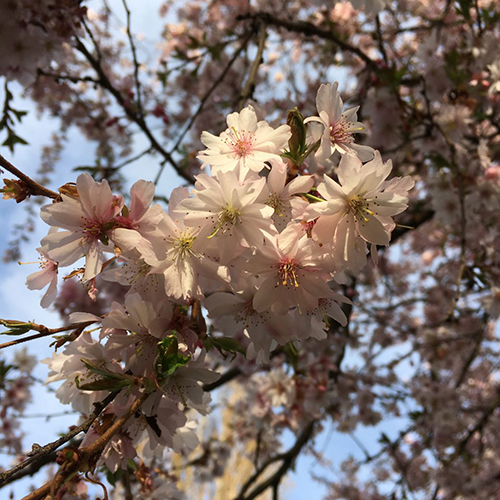
By Tara Lissner, Swiss Gardening School
Well, we’ve had snow, sunshine and rain and with the time change this weekend it really is beginning to feel like spring. I’m enjoying the flashes of colourful bulbs in bloom everywhere I go with the scent of hyacinths heady in the air, the garden filled with birds chirping before dawn and the massive bumble bees defying gravity with their flying skills – it feels like spring.
With this change in seasons comes that irresistible urge to get back to the garden, long gone are the lazy afternoons with gardening books open for inspiration, now is the time to work.
I spent hours outside this past weekend fixing up the vegetable plot, assessing the state of the compost bins (I have four), trimming back errant rose branches and carefully clearing out the perennial border. I also had some time with my mulch. I love mulch – a curious statement perhaps but not when you realize what magic it works. I keep a large bin of leaf mould and once decayed, after at least a year, I spread it on beds in the garden which need an improved soil structure, perhaps areas where I’ve noticed the beds drying out in the summer. Leaf mould does not bring much in the way of nutritional value to the soil however it really does improve the structure. By adding a layer of at least 6cms to the earth, weed growth is discouraged, humidity is retained and the insects do all the work by working the leaf mould into the soil. I use well composted garden material as mulch in areas like the vegetable plot and perennial beds where I want to add nutritional value as well as improving the soil structure.
I planted a green manure of spinach this winter in two of my raised vegetable beds and this weekend turned them into the soil – I’ll wait another couple of weeks before I plant something in them. My herb bed is showing signs of life with the tarragon coming along nicely and the unstoppable chives reaching for the sky. I’ll be moving the beans into a new position this year and have just moved the structure that they will climb up from one bed to another – now all I have to do is choose a variety. We have had snow over the Easter break in the past so if you are thinking of sowing vegetable seeds directly now do consider buying some fleece to protect your young seedlings – better safe than sorry.
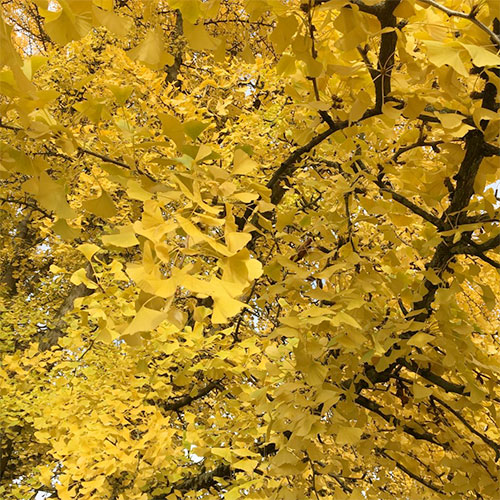
By Tara Lissner, Swiss Gardening School
Wow! What an autumn we’ve enjoyed. The days, although shorter, have been filled with the most wonderful light – the trees have kept their leaves for the longest time and spoiled us with their rainbow of colour. I am a sucker for a good tree, once I find a good one I make it a point to drive past when I know it is at its peak. My children are tormented with the constant “ohhs” and “ahhs” and “look at that” from my position as driver. This month my favourite is the fabulous Gingko biloba, the Maidenhair tree (photo above) located in the park by the Musée du Léman on the lake front in Nyon. Although native to China this specimen tree grows very well in Europe. It is one of those beauties best grown in public places for all to enjoy as it can reach a height of 30ms. The leaves are fan-shaped and turn the most vibrant butter yellow at this time of year.
The only downside of trees keeping their leaves for such an extended period is that the leaf raking seems never to be done. As I’ve mentioned before rake up the leaves, bag them in black sacks with some air holes, keep them damp for at least a year or more and hey presto, magic leaf mould. Leaf mould is a brilliant mulch for the garden, keeping the weeds to a minimum and the moisture retained. Unlike garden compost it does not bring much nutrition to the garden, so best not to add it to the vegetable plot.
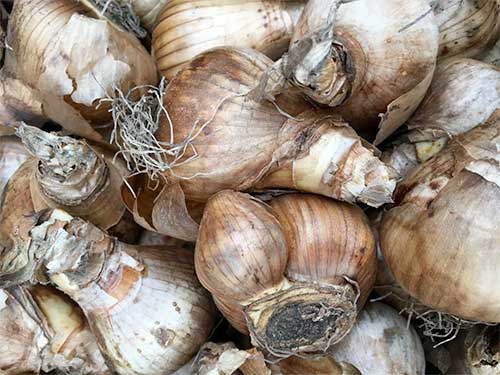
By Tara Lissner, Swiss Gardening School
Well we’ve been on a roller coaster with the weather over the past few weeks. The Indian summer lasted beautifully through the end of September and with the arrival of October the temperatures dropped and the bise wind rose. The tomatoes hung on to the bitter end but it is all over, the green ones are now in the kitchen in the hope that they may turn red but I predict an afternoon of green chutney making in my future.
This time of year is always bittersweet for the gardener, the glory of the summer garden has come to an end, the perennials have all gone to seed and while the seed-heads look wonderful the colour is slowly disappearing before us. Dahlias continue to perform and until we have consecutive nights of freezing temperatures they will continue to shine. It is a time to think about the future of course because this is the perfect time to add plants to the garden, trees, shrubs, hedges and perennials can all be planted until the freezing temperatures arrive. Have you got plans for trees, adding perennials? Take advantage of dry days to get out and make plans and plant them up, it is never nice to garden in the rain.
I’ve been busy this week, harvesting all the beans, I’ll be drying them out, shelling and storing them for use in soups and stews over the winter. I aways cut the plants to the ground, throwing them onto the compost, and leave the roots alone until the spring, this allows the nitrogen nodules along the fine roots of the beans plants to augment the nitrogen in the soil. I then cover the bed with about a 10 cms layer of mulch and leave that to work its way into the soil over the winter. Home made compost makes for a great mulch but it should be well broken down and at least a year old. If you don’t have any ready to go there are a number of places locally where you can buy it by the “big-bag” or have it delivered. I’ve used BGS Compost SA in Givrins, although closed on Saturdays it opens from 07:00 Monday to Friday.
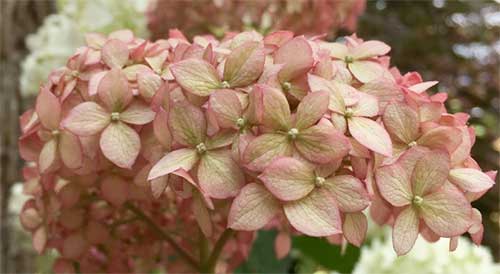
By Tara Lissner, Swiss Gardening School
It is true that most of us who garden spend a fair amount of time discussing the weather; too hot; too dry; too windy; too wet; too wet; too wet. Well this summer we’ve certainly had a lot to discuss, with the incredibly wet and cool start in May and June to the tremendous heat of August – never a dull moment. Our gardens are so quickly affected by the changing weather conditions especially when it is holiday time and we are not on hand to adapt our habits day-by-day or week-by-week. In my experience it is always best to err on the side of caution and this is a perfect example of why. Early this summer I left half a dozen newly purchased perennial geraniums amongst a group of larger pots hoping they would be happy (and sheltered) enough during my week-long absence – I came home to crisp leaves and parched soil. I was so sad I immediately moved them to a more shady spot, drenched them with water and have been nursing them back to their original state ever since. Note to self, always pay a teenager to water even for a short trip.
The hydrangeas this summer have been just spectacular and although they need quite a lot of water, if they are in the correct position in the garden they will have given you quite the show. There has been a renaissance of the hydrangea in recent years with more and more varieties becoming easily available, this year I found a very pretty new (to me) variety called Hydrangea arborescens “Incredible Pink”. As the name suggests it is pink but not the bright showy pink of my childhood. Each petal is delicately edged in pink giving an overall dusty pink colour (see photo above) – just gorgeous, now all I have to do is find a reasonably shady spot for it in my garden, no easy feat.





